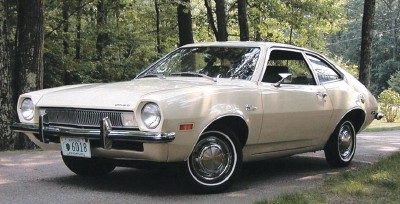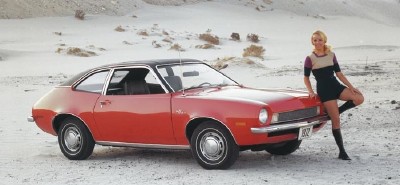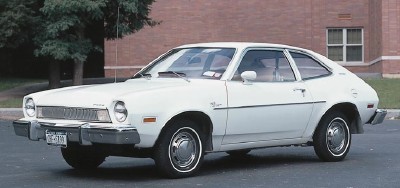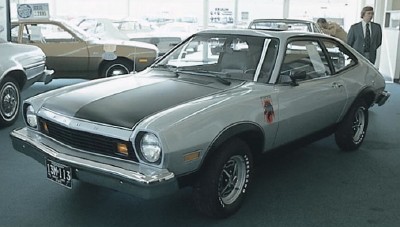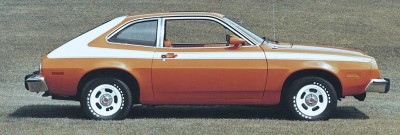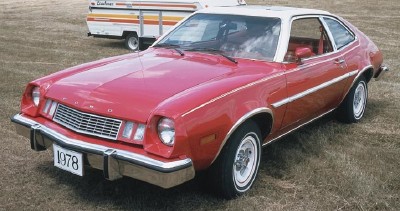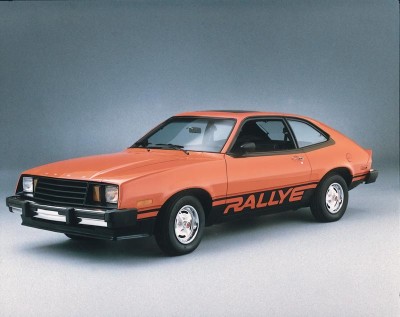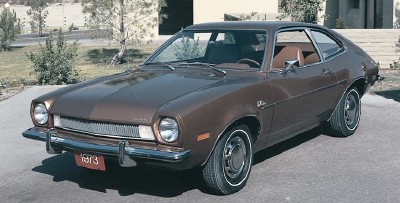The 1971-1980 Ford Pinto was another of Ford's "pony" cars. Dozens of accounts have been written to commemorate Lee Iacocca's foresight in pushing for production of the Mustang, the sporty compact that started the ponycar craze in the mid Sixties. However, there was another "pony" car during his tenure at Ford, and Iacocca is less freely associated with the birth of the Ford Pinto. Perhaps he would prefer it that way.
Like the Mustang, this car was a marketing success in a new field. But along the way, it had to weather some distinctly bad publicity that the Mustang did not. This other "pony" -- Ford's fourth product line to follow the equine theme -- was the subcompact Pinto.
There was nothing really fancy about the Pinto. Its main goals were to provide reasonable comfort and adequate performance for modern freeways while being economical to buy and maintain. By all accounts, Iacocca watched over the birth of this car closer than he had with the Mustang, and was determined that it would not cost a penny more than $2,000, nor weigh an ounce more than 2,000 pounds.
Ford started toying with the idea of a domestically produced smaller compact in the mid Sixties. As early as 1967, there had been some consideration of an 85-inch-wheelbase car powered by something with less than six cylinders. Iacocca, then executive vice president in charge of Ford's North American Vehicle Operations, argued that between the Volkswagen from Germany and the rising tide of Japanese compacts, these imports would soon capture the entire subcompact market in the United States, and Ford should produce a car to meet these foreign challengers head-on.
After the successful launch of the Mustang and an upÂswing in sales, many felt Iacocca was next in line for the presidency at Ford. However, when Arjay Miller left the post in late 1967 to become Vice Chairman of the Board of Directors, Henry Ford II surprised nearly everyone in the industry when he went outside the company to General Motors and brought over Semon "Bunkie" Knudsen. This created tension between the Iacocca camp and those who got into Knudsen's corner. Cold shoulders were commonplace on the upper floors of the big "glass house" in Dearborn.
Adding to the ill feelings was the fact that Knudsen was completely out of sync with Iacocca's plans for a small domestically built car. According to the new president, Ford would get by just fine by concentrating on the current full-size, mid-size, and compact offerings. In Knudsen's view, Ford was already ahead of the game with the 1970 Maverick, due out in early '69 as a replacement for the aging Falcon.
However, Iacocca argued that confronting the imports directly was the best course. His little "G-car" might have been a little too small, but something smaller than Maverick was going to be necessary. That need only intensified after reports came in that the other U.S. automakers were planning to field smaller-than-compact cars.
Iacocca's persistence paid off and in January 1969, Henry Ford II gave his approval for Ford's first domestic sub-compact. This defeat, plus continuing pressures from other areas of the company, led to Knudsen getting the word from HFII that his efforts as president were "just not working." In due time, the presidency was Iacocca's.
(By some accounts, Knudsen did have a substantial role in the Pinto project. In an interview published in the April 1994 issue of Collectible Automobile®, former Ford stylist Bob Thomas recalled the process this way: "My design turned out to be the exterior for the Pinto. I was amazed at the package for the Pinto ... After they showed this model, Bunkie picked it -- and that was it. Of course, Knudsen didn't get any credit for the Pinto because shortly afterwards he left, not by his own choice.")
For more picture-packed articles about great cars, see:
- Classic Cars
- Muscle Cars
- Sports Cars
- Consumer Guide Automotive
- Consumer Guide Used Car Search
Advertisement
